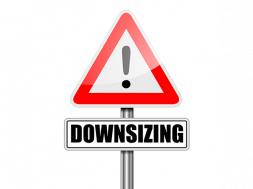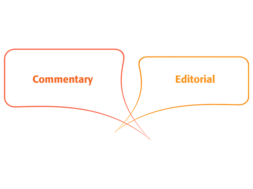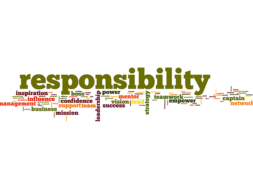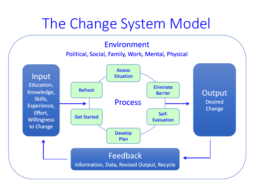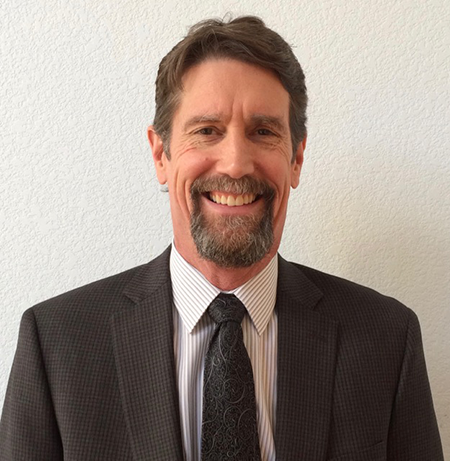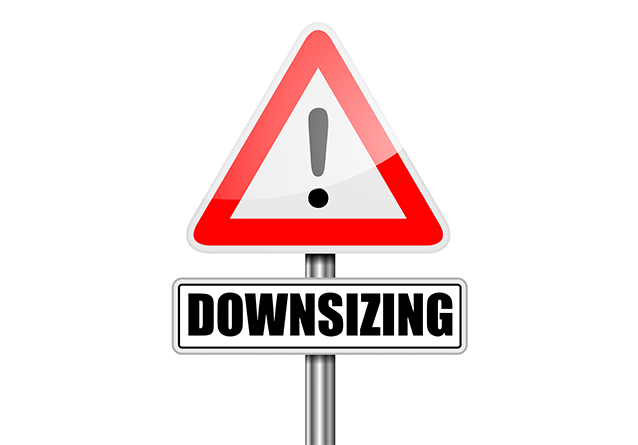
Who Will Survive the Downsizing of Higher Education?
By Wallace K. Pond, Ph.D., President, Khawarizmi International College and CEO, Khawarizmi Holding Company
In previous articles published at WallaceKPond.com, I have noted that higher education enrollments are declining, institutions are merging and closing, and that higher education as an “industry” will look quite different in the near future. Those things are already happening, and the data is fairly stark, with rates of closure and mergers increasing across all sectors of higher education. Some projections suggest that as many as half of all institutions of higher education (IHEs) will fail or merge in the next ten years.1 On the other hand, many institutions will certainly survive (there are currently approximately 7,000 Title IV eligible institutions) and some will thrive. For the foreseeable future, elite privates and most large public flagship universities will do well. There are a variety of financial, structural, social, and political reasons for this, but Stanford and the University of Michigan will be around longer than anyone reading this article!
So, what about the “rest” of higher education?
Some institutions have already utterly reinvented themselves and are assuming leadership roles in the move toward what higher education will look like in the future.
Some are very large, public, consumer-driven models like Southern New Hampshire University, Western Governor’s University, and Arizona State. They are true outliers and may, in some ways, come to dominate some elements of higher education. Other examples are well funded, well connected public and private institutions that have the resources to experiment with educational and business models such as MIT, Purdue, and Grand Canyon. There are also what we might call “niche” players that are thriving on a much smaller scale. Examples include Evergreen State College, Colorado College and a host of proprietary career colleges that are experiencing unusual success, typically with non-traditional curricula and instructional models. Interestingly, despite profoundly different size, structure, mission, resources, profit status, history and other factors, all of these institutions share some things in common and point to a road map for navigating our turbulent present to thrive in the future.
Bold leadership
One thing these institutions tend to have in common is leadership that embraces risk and is willing to make bold bets, particularly in ways that are purposely outside the expected status quo – they also tend to have a high tolerance for ambiguity, complexity, and all around turbulence. Purdue University, for example, leaped into the deep end of the pool and acquired one of the largest, most established for-profit online operators in the U.S., immediately going from zero to sixty in terms of their ability to reach outside of the typical state university model of educational delivery and dramatically broaden their enrollment market. It would be difficult to overstate the boldness of this move relative to the political and academic blowback, accreditation challenges, etc. Grand Canyon built a Christian university with a for-profit tax status, in a large, combined residential and commuter campus model, then split the university into an academic component that is not-for-profit and an administrative and service component that is for-profit. Small institutions like Upper Iowa University, with a campus population of less than a thousand students, avoided closure by making a full-throttle commitment to serving the military and international markets, as well as nearly two dozen U.S. locations outside of Iowa, which are now magnitudes larger than their home campus. Colleges like Vassar and Evergreen State committed to very non-traditional educational models that serve a small, but passionate group of students who choose those colleges because they are different. The lesson is that it is not necessary to operate at mass-market scale to be viable. It is necessary, however, to reach a market that wants what you offer and that is large enough to generate sufficient enrollments to cover fixed costs.
Relatedly, institutions that provide a pathway to professional licensure required for employment will also have an advantage – at least for a while. Good examples are career/vocational colleges that provide credentials for trades requiring licensure and just about anything in the health sciences that leads to careers as clinical practitioners. The unfortunate flipside of this situation is that high cost (and high debt) “passion” programs that do not lead to concrete employment have been particularly hard hit and will struggle going forward.
Within the career school sector, many highly focused institutions that graduate in-demand workers are doing well and will continue to do well – particularly those that have managed to graduate students with manageable debt prepared for good wage jobs.
They typically have strong relationships with employers and proven, applied curricula that deliver job-ready graduates on day one. PIMA Medical Institute is an example of a proprietary school that continues to grow by focusing on external relationships and quality student outcomes. The key is providing value to all stakeholders by doing the basics really well and meeting the needs of students, industry, and employers.
And importantly, the greatest outliers experiencing the greatest success across sectors, not only have the right institutional leadership, but they also have boards and/or ownership that are equally up to the task – willing to take risk and support sustainability over short-term gains.
Stakeholders as customers
Another commonality in these outlier institutions is a willingness, if not enthusiasm, to see multiple stakeholders as customers, then to figure out how to meet those customers’ needs and desires on their (the customers’) terms. The historical higher education model has always been a sort of “my way or the highway” approach to students. When demand outstripped supply and education was a highly exclusive endeavor, that model worked fairly well. In the current and future reality of higher education as a commoditized endeavor in which supply exceeds demand, the “my way or the highway” approach is a ticket straight to irrelevance and obsolescence for most institutions. Arizona State and Colorado College, for example, at extremes of the “traditional” educational spectrum, are both customer-centric institutions at which very different versions of flexibility attract students who want those experiences. Not surprisingly, both are financially stable with strong enrollment.
Partnering for success
A third commonality of institutions that will survive and thrive in the future is an openness toward partnership, collaboration, and entrepreneurialism. IHEs have historically been purposely-isolated institutions (the ivory tower). Institutions that are thriving or poised to thrive despite the overwhelming challenges facing higher education today, tend to actively pursue mutually beneficial and value-added partnerships with other IHEs, industry, the community, government, highly skilled vendors, and other entities that help them generate alternative revenues, improve efficiencies, improve quality, provide relevancy to students, grow enrollments, expand technology, and many other benefits that are only possible through partnerships or even joint ventures. This often requires that institutions look very differently at traditional notions of “ownership” of the higher education process as well as seeing potential competitors as allies. It also often requires an acceptance that other entities and industries may do some things a lot better than higher education institutions do those things and that even constructs as sacred as the degree itself may be only one of many potential credentials available to students.
A culture of success
There are cultural commonalities as well among institutions that are structured for success. These institutions tend to be wired to embrace rather than fear change – even highly disruptive change – and their leaders tend to be good strategists and change managers. In fact, they tend to accept and anticipate change as an on-going dynamic that is woven into normal operations. These institutions also have good clarity around a shared vision and they act rationally to achieve the vision. Interestingly, the most enlightened IHEs are also beginning to understand that survival in the marketplace is becoming more about accountability to stakeholders – students, parents, employers, the community, taxpayers, and others than it is to the traditional input driven and largely irrelevant system of regional accreditation, rankings, and Department of Education oversight.
Institutions that can deliver value through solid outcomes and affordable cost will be stronger in the market and more likely to survive and thrive.
As a bonus, some institutions are also committed to assertively addressing challenges of access, affordability, support for diverse learners, creative and effective applications of technology, and the notion of the college or university as an incubator for robust thought leadership. Unfortunately, “altruism” in higher education is not necessarily supported by current accreditation and regulatory models, but it is becoming more appreciated in the marketplace, and institutions that can achieve sustainable retention, graduation, and employment rates with at-risk student populations will continue to have a solid opportunity in the foreseeable future. The biggest winners in this part of the market would be community colleges (if they can improve their terrible completion rates) and career colleges (if they can solve their relatively high student debt loads).
A sustainable financial model
Lastly, outlier institutions that will lead the way going forward generally have figured out a sustainable financial model. They typically are supported by non-tuition and/or high margin revenue streams and actively manage institutional P&L. They understand the relative return on investment for one decision vs. another and have accepted that they simply cannot ignore financial realities. Despite the gnashing of teeth that typically accompanies any discussion of “business,” at least in the traditional academy, a requisite of survival for IHEs now and in the future is an active, purposeful commitment to manage themselves as businesses. This is not about profit vs. not-for-profit. It is about the reality that regardless of profit status, IHEs can only survive if they are financially sustainable and that does not happen as a passive activity. As an example, Southern New Hampshire University, the fastest growing, and arguably most innovative, not-for-profit, public university in the U.S., has staffed much of its non-academic senior management with professionals from outside of higher education who are experts in marketing, sales, technology, finance, and operations among other areas. Their strong profit margins in online education subsidize the main campus and finance a host of investments, and even acquisitions, that would not be possible otherwise. Arizona State has a similar financial model in which high margin operations subsidize lower margin ones and make it possible to offer highly discounted tuition to the employees of a corporate partner such as Starbucks.
It is true that some number, and maybe a large number, of institutions will not survive the next ten to twenty years and fewer still will truly thrive. Fortunately, there is an emerging model for both surviving and thriving, which a growing number of enlightened colleges and universities are slowly adopting.
A footnote for proprietary institutions
Compliance
In the proprietary sector of higher education, in order for any institution to survive, let alone thrive, there must be a non-negotiable commitment to compliance and a willingness to sacrifice short-term gains for long-term sustainability. This applies equally to small, single program schools and large corporate institutions. And it is important because for-profits are treated differently by regulators and because bullet-proof compliance also tends to correlate with operational decisions that protect student interests as well. The last several years have shown with painful clarity that there is no safe haven for any institution that knowingly cuts corners. The reality is that not-for-profits, and particularly public not-for-profits, are exposed to much less risk regardless of their compliance failures. Recent implosions at institutions such as North Carolina (academic integrity), Baylor (systemic Title IX violations) and Louisville (financial fraud, governance, and corruption) suggest that there is really no level of scandal that is truly an existential threat for those types of universities. Fair or not, they simply operate in a different world from proprietary institutions and their survival is based on different financial, regulatory, and political formulas.
The ownership model
Family run schools are not immune to the deep structural challenges we are facing today, but they tend to see their work in terms of legacy, which affects how they think and operate. As an ownership structure, it is somewhat protected from the pressures of private equity and publicly traded models, which have largely struggled over the last decade or so. Family owned businesses are often challenged with access to capital, but they also know how to run very lean when necessary and they think well beyond the next earnings report! For-profit institutions in general, although overly dependent on tuition, have far lower overhead overall than traditional institutions. That is a structural advantage going forward.
DR. POND has been a mission-driven educator for 30 years. He began his career as a high school teacher and adjunct professor and spent six years in the elementary and secondary classroom working primarily with at-risk youth. Wallace was also a public school administrator and spent another six years as a full time education professor and administrator, working in both on campus and online education, bringing education to underserved students in English and Spanish.
For the last 19 years, Dr. Pond has been a senior executive in higher education, holding both campus level and corporate positions overseeing large, multi-campus and online institutions of higher education in the U.S. and internationally. He has served as chancellor, president, CEO, COO, and CAO (Chief Academic Officer). He has deep expertise in the areas of strategic and operational planning, P&L management, organizational health, change management, academics, and accreditation and regulatory affairs, among other areas. Dr. Pond has lived, worked, and studied in North America, Latin America, the Caribbean, Europe, the Middle East and Asia. He has presented nationally and internationally and is the author of numerous articles and the book, “The Lights Are On, Is Anybody Home? Education in America.”
Wallace, a licensed pilot, has a bachelor’s degree in Spanish, a Master’s degree in Human Resource Education, and a Ph.D. in Education. He has two grown children and resides with his wife and youngest daughter in Colorado, USA and the United Arab Emirates.
Contact Information: Wallace K. Pond, Ph.D. // President, Khawarizmi International College // CEO, Khawarizmi Holding Company // 719-247-0486 USA; 971 50 984-5012 UAE // wkpond@icloud.com // https://wallacekpond.com
